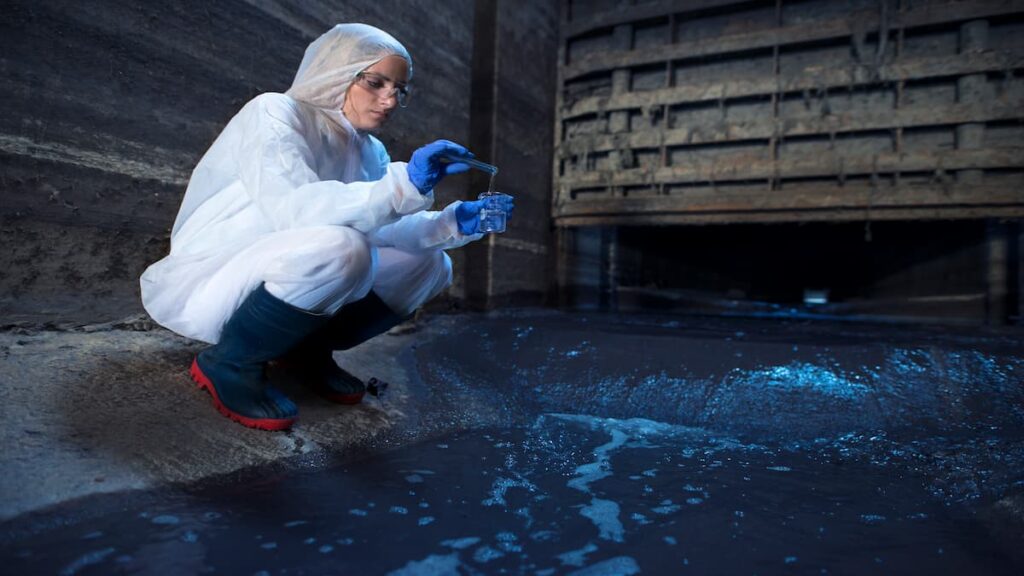Textile dye pollution is one of India’s most pressing environmental problems. Here’s how bio sewage treatment can provide a sustainable and long-term solution.
India’s textile industry is one of the largest in the world, but it comes with a heavy environmental cost. Large volumes of wastewater from dyeing units often end up in rivers and lakes, carrying toxic colors, chemicals, and heavy metals. These pollutants not only harm aquatic life but also contaminate groundwater and impact communities living nearby.
Traditional chemical-based treatment methods are often not enough to completely remove complex dye molecules. They may reduce visible color, but invisible toxins remain. That’s why industries are now turning to more natural, sustainable alternatives such as bio sewage treatment.
What is Bio Sewage Treatment?
Bio sewage treatment is a process where microorganisms are used to break down organic and chemical pollutants in wastewater. Instead of relying on harsh chemicals, this method uses nature’s own mechanisms to clean water.
For textile wastewater, this approach is particularly effective because microbes can target dye molecules and degrade them into simpler, harmless compounds. Unlike conventional systems that only mask the problem, biological methods address the pollutants at their root.
This concept is closely tied to bioremediation wastewater treatment, where microbes are selected and optimized to deal with specific pollutants present in the water.
The Role of Bioremediation in Wastewater Management
To understand why this works so well, let’s look at bioremediation in wastewater treatment. Bioremediation relies on the ability of microbes, bacteria, fungi, or even algae to consume pollutants as their food source.
When applied to textile effluents, these microorganisms break down stubborn dye chemicals that would otherwise stay in the environment for years. This process is known as the bioremediation of wastewater.
The strength of this method lies in its adaptability. For example, different microbes can be chosen for different dye structures. The bioremediation process of wastewater treatment not only reduces pollution but also ensures that the water leaving the plant meets regulatory standards. In other words, it is both eco-friendly and compliance friendly.
Why Industries Should Consider It
Switching to bio sewage treatment is not just about compliance—it brings a range of advantages.
Here are some key reasons industries are making the shift:
- Cost savings: Biological systems often use less energy and fewer chemicals compared to traditional methods.
- Eco-friendly operations: Reduce harmful discharge and prevent secondary pollution.
- Regulatory compliance: Prepares industries for stricter water discharge norms in India.
- Water reuse potential: Treated water can often be recycled and reused within operations, thereby reducing dependence on freshwater.
- Improved brand image: Companies adopting green practices strengthen their credibility with customers and regulators alike.
These benefits highlight why investing in bioremediation wastewater treatment is a smart business decision, not just an environmental one.
Case for India’s Textile Sector
Textile hubs in India, from Tirupur to Surat, generate thousands of liters of dye wastewater daily. Many small and mid-sized units struggle to treat this effectively, leading to widespread river pollution.
Here, bio sewage treatment offers a practical solution. Whether installed as a standalone plant or integrated into existing systems, it can handle a wide range of textile dyes and effluents. By combining primary treatment methods with advanced bioremediation in wastewater treatment, industries can achieve cleaner discharge while staying cost-efficient.
For an industry under increasing public and regulatory scrutiny, adopting biological methods is not just advisable, it’s essential.
Steps Towards Adopting Bio Sewage Treatment
For textile units considering the shift, the path forward is straightforward.
- Conduct an audit of current wastewater volumes and types.
- Evaluate treatment gaps where conventional methods are failing.
- Identify opportunities for bioremediation of wastewater in your specific setup.
- Work with experts who can design, install, and optimize a biological treatment plant.
- Train staff to effectively manage and maintain the system.
By following these steps, industries can gradually transition to cleaner operations while maintaining control over their costs.
A Smarter Way Forward for India’s Textile Pollution Problem
India’s textile dye pollution is a serious challenge, but it’s not an unsolvable one. By adopting bioremediation processes for wastewater treatment, industries can significantly reduce harmful discharges while moving toward a greener future. The combination of eco-friendliness, cost-effectiveness, and regulatory compliance makes biological treatment the best choice for the sector.
At Amoda Chem, we believe sustainable water management should be accessible to every industry. Our expertise in bio sewage treatment and bioremediation wastewater treatment enables us to design solutions tailored to the challenges of textile dye wastewater. We help clients not only meet today’s discharge standards but also prepare for tomorrows. If you’re ready to tackle wastewater problems with confidence, we’re here to partner with you.

